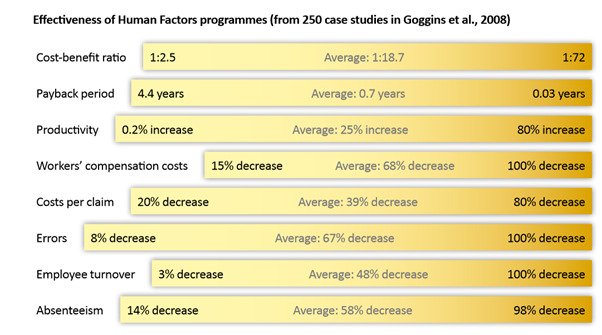
PPeople are present in all organizational, corporate, and professional environments. They are either employees, supervisors, people responsible for maintaining work processes, users, or customers. Ergonomics and human factors refer to the interdisciplinary field that brings together people, technology, and processes to maximize how they perform. Although the two concepts are identical, ‘ergonomics’ is becoming increasingly popular in many businesses in India and will be used throughout the rest of this article.
Ergonomics has four essential characteristics:
- It adopts a systems approach (the system includes the cultural and physical environment, the organization, and the specific task requirements).
- It is driven by design (an analysis results in new or redesigned approaches, recommendations, workplace, and tool design).
- It is a human-centered, iterative process (users are a resource for developing knowledge and testing solutions).
- It prioritizes both performance and well-being (maximizing efficiency, effectiveness, health and safety, and job satisfaction/enjoyment).
There are three characteristics that distinguish ergonomics from other fields that focus on people (such as psychology, sociology, or medicine):
- Ergonomics is concerned with the design, especially workplace design and design of work practices, tools, products, machines, and equipment that people use. Although it is occasionally essential to remedy things that have already gone wrong, the objective is to intervene proactively to prevent things from going wrong in the first place.
- Ergonomics considers the entire system to optimize performance outcomes. Simply incorporating new technology into old processes will not yield the intended outcomes unless the people who will be working with that technology are considered in the context of the larger picture.
- Ergonomics is concerned with the twin outcomes of overall system performance and overall system well-being. It regards these results as two sides of the same coin rather than independent outcomes. It is concerned with increasing the efficiency, effectiveness, and productivity of labor, as well as the worker’s comfort, safety, and health, in order to maximize performance.
Some individuals believe that anybody can create systems that operate effectively for mankind.
If human factors design is just common sense, why are there so many so-called human mistakes, accidents, recalls, and product failures?
Failure to engage or listen to Ergonomic specialists has resulted in several costly and catastrophic incidents throughout history, including the Chernobyl nuclear disaster, the Boeing 737-Max 8 disasters, the Bhopal Gas leak tragedy, and the Deepwater Horizon oil spill.
Even most experienced people are often unaware of where the dangers are and how to devise ways to prevent them without sufficient training.
Ergonomics Occupies no man’s land between engineering and medicine, architecture and health and safety, and computer science and consumer product design. It is the only scientific subject that focuses specifically on the interaction between people and machines. It is built on decades of scientific knowledge of human characteristics and capabilities with engineering knowledge on how to design systems that fit people, augmenting their best features while compensating for their limitations.
It uses training in psychology (to effect behavior change and complex system design), biomechanics, and human physical characteristics (to ensure the product fits the user correctly) to make highly effective changes in the design of technologies and work processes, preventing errors and accidents and increasing worker output.
Historically, ergonomics can be seen to have risen as a response to the need for rapid design of complex systems. The modern ergonomist has an important role to play as a member of the design team, providing scientific information about humans (a scarce commodity in many organizations) and ensuring that all aspects of the system are evaluated from the user’s or operator’s point of view.

Ergonomics uses successfully tested techniques that can be adopted across almost any industry.
